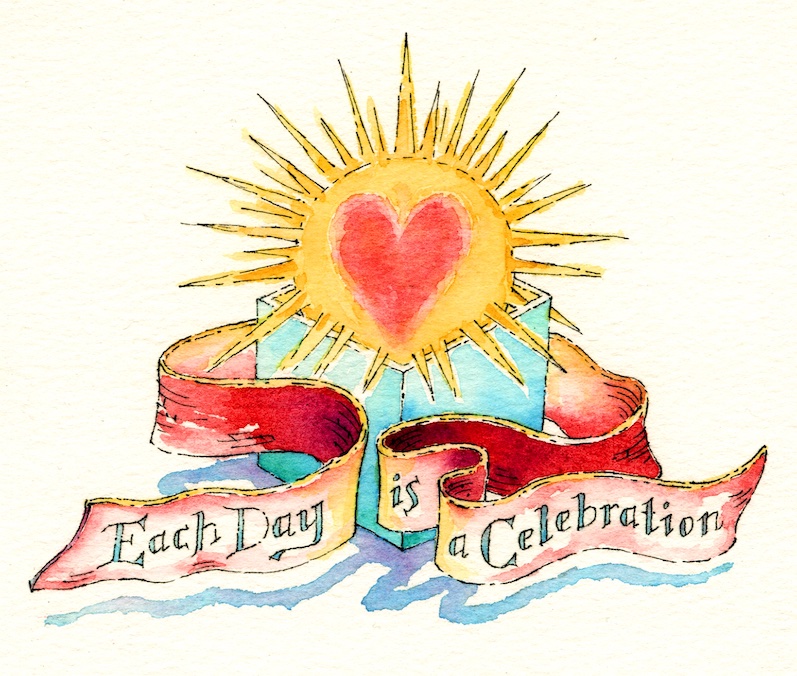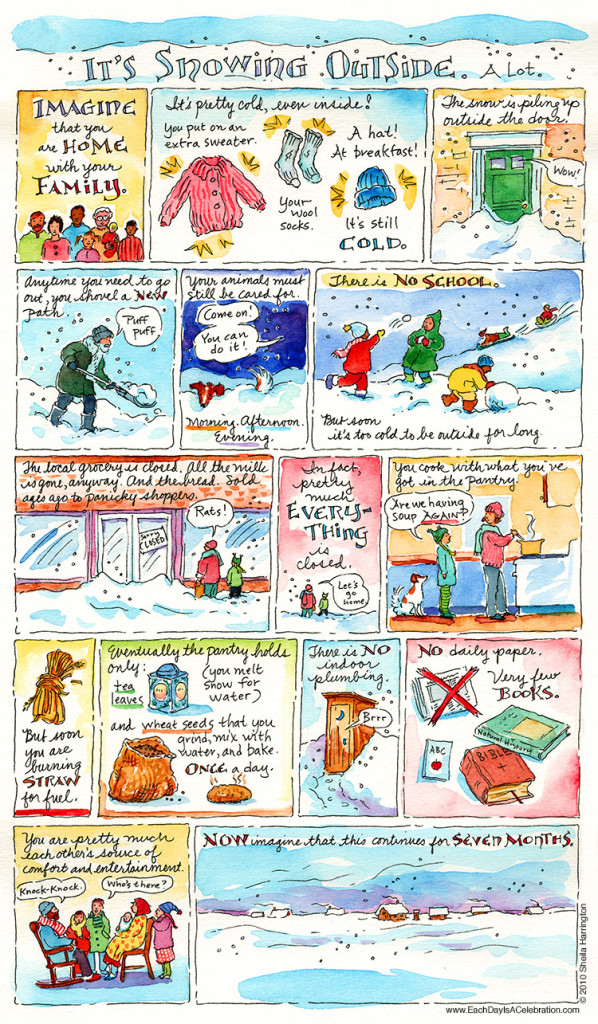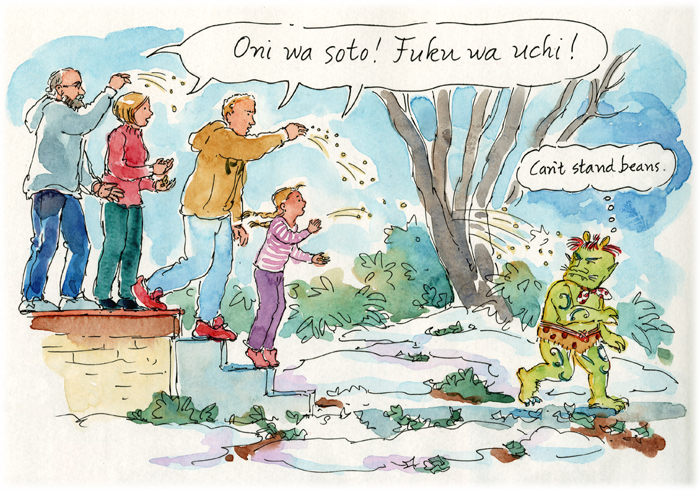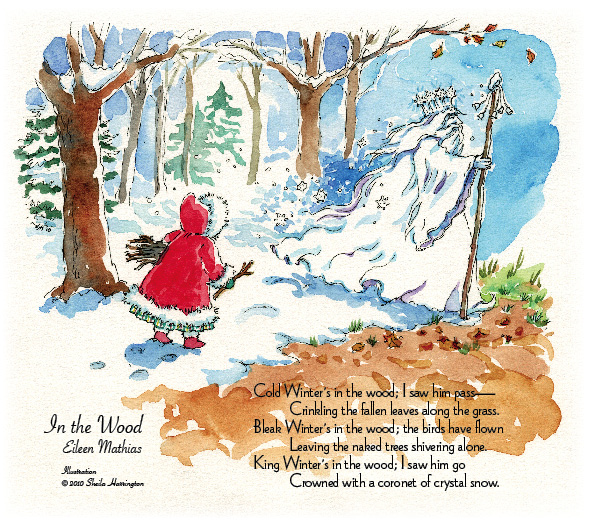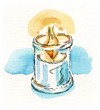(click twice to expand to full-size)
Then you may get a sense of the resilience and inner resources of the family of Laura Ingalls Wilder (1867-1957), whose birthday it is today. Such was the winter they experienced in Dakota Territory during the winter of 1880-81.
Wilder, born in a log cabin in Wisconsin, is well-known from her “Little House” books depicting 19th-century pioneer life through the eyes of a growing child. They are unique in combining a finely observed and personal yet unsentimental window into iconic aspects of American history: travel by covered wagon, homesteading, Indian migration, education in a one-room schoolhouse—with fascinating homely detail: cheesemaking, house construction, sugaring off—and a glimpse into the inner life of a bright, curious, imaginative girl struggling to adapt to the circumstances of her time and place.
The family’s joys are simple, their sorrows formidable. Crop devastation, malaria, prairie fires, and a sister’s blindness are described; the death of a baby brother is left unrecorded, probably still too painful to include. The books are a quiet testament to stubborn faith, determination, love, and courage, virtues frequently lauded but less often demonstrated. A bouquet of wildflowers on a clean checkered tablecloth and a family hymn accompanied by the paternal fiddle are the stuff of a boundary between hope and despair.
Although she had written magazine articles and newspaper columns, Wilder didn’t publish her first book until 1931, when she was 64, after having been asked for years by her daughter Rose to put her childhood memories on paper. Since then her books have been published in 40 languages and have informed, inspired, and enchanted many millions of readers. Happy Birthday, Laura Ingalls Wilder! You certainly were (and remain) a shining light of my growing-up.
